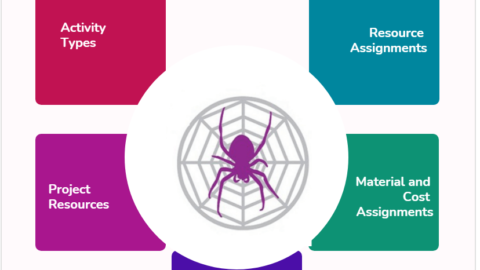How APIs Are Powering the Consumer-Side Digital Transformation
To say it’s hard to imagine life without API is an understatement. In fact, in the modern era, it’s impossible to function without them. APIs have become the unsung heroes of our digital-first world, silently enabling a slew of functions that keep things running and make our lives easier. Not only critical in business environments, but APIs keep consumer apps and services seamlessly connected. Rather than managing a laundry list of functions and relying on manual processes, APIs are the links that keep it all together. But how exactly do APIs facilitate digital transformation and modern life as we know it? And how are APIs powering the consumer-side digital transformation as technology becomes more ingrained in all facets of work and play?
Table of Contents
What is Digital Transformation?
Chances are, you’re embracing digital transformation even if you’re not calling it by name. Digital transformation is an all-encompassing term for using technology to enable new processes and experiences for end users. So, how APIs work?
At its core, digital transformation is driven by customer experience and aims to add value for consumers. Digital transformation can respond to market changes and old ways becoming obsolete, such as the Netflix (and similar platforms) alternative to video stores. It can also mean supplementing existing platforms, like public library app Libby’s eBook and audiobook rental offerings, in addition to traditional print materials.

In essence, digital transformation makes things easier and more accessible and helps businesses respond to customer demands. APIs are the backbone of these initiatives, making it possible to digitize and streamline processes.
What Do APIs Enable in Daily Life and How APIs Work?
The average consumer isn’t familiar with APIs and how they work and wouldn’t be able to tell you how and where they depend on them. Thankfully, they don’t have to. With or without the ability to call them out by name, APIs are ubiquitous for helping them accomplish myriad tasks.
To illustrate the proliferation of APIs in modern life, let’s look at a few key areas that APIs rule the day:
Travel and APIs
When it comes to shopping and booking travel, APIs facilitate:
- Shopping for flights and searching for hotels
- Using digital boarding passes for transportation
- Receiving real-time status updates on delays or gate changes
- Searching and inputting destination data relevant to your area on applications like Google Maps
- Suggesting routes based on your location, traffic, and travel type
- Tracking public transportation statuses, including delays due to peak periods or traffic
Social Media
APIs make communication and connection through social media a feature-rich experience for end users:
- Searching and finding results, including items tagged with a person’s profile
- Reviewing posts with trending topics
- Prioritized search results based on your physical location
- Easily sharing links and articles from your browser to your social profile
- Personalized ads to enable a more relevant shopping experience through suggestions
Financial Services
Banking apps use APIs to facilitate many functions:
- Making funds transfers between accounts or even banks
- Viewing multiple institutions’ accounts in a single place
- Smart wallets like Google Pay and Apple Pay, enabling users to tap a mobile phone to complete a payment
Health and Wellness
The wellness industry is popular and varied, and APIs add value to health-minded users:
- Tracking activity, including steps walked in a given day or period
- Pairing a mobile device with a wearable such as a smartwatch
- Syncing fitness data across devices and drawing insights from demographic details and goals
- Sharing information across activity, diet, and other apps related to health measures
eCommerce
Online shopping is ubiquitous, and APIs personalize the shopping experience:
- Customizing search results and website content based on factors such as locale and previous searches
- Easily input payment information stored securely on the device or retrieved saved passwords for payment services such as PayPal
- Improved automation and confirmation of orders for peace of mind
- Search, place orders, and track delivery in real time with on-demand convenience apps like Uber Eats
- Shipment tracking and status, including real-time package position with apps like Amazon and services like UPS
- Ability to change website currency for an accurate conversion based on preference
Communication
Phones often seem like they’re used for everything but communicating with another person, but APIs facilitate modern communication:
- Share contact data across apps, including the traditional inbuilt phone app and apps like Zoom, WhatsApp, Facebook, and others
- Copy links or text, share location data or send images easily across apps
- Use hyperlinks for URLs, phone numbers, email addresses, meeting rooms, and more to make contact with ease
Perhaps Most Importantly for APIs…
From the above list, it’s obvious that customers rely heavily on APIs for a well-rounded experience on virtually any website or app they use. There’s one thing noticeably missing from this list: security.
One aspect crucial enough to deserve its section is security. The average customer often takes security for granted until something happens. Unfortunately, some businesses do the same.
Security comes into play in a couple of different ways.
Securing APIs
Since APIs constantly share valuable data, protecting them is essential. These silent warriors remain vigilant, protecting the end user with security activities, including:
- Authentication
- SSL certificates
- User and access privileges
- Digital tokens
- Password validation
- Clearing cache
- Secure transmission of data
- Runtime security
API Security
While APIs and digital transformation perform security functions, the security of the APIs themselves plays a crucial role. As consumers become more reliant on API functionality by the day, organizations and their developers have a responsibility to ensure security is a priority.
Cybercriminals recognize API dependence and have turned their attention to exploiting vulnerabilities for personal gain. API development requires a security-first approach from build, release, and beyond to protect end users.

Real-time monitoring and actionable insights are fundamental to API security, but that’s not all. “APIs are a preferred attack vector for cybercriminals, and the attack surface continues to grow. Overall API traffic grew by 168% while malicious API traffic grew 117%.” in 2022, according to Salt Security.
Keeping consumers safe in an age of digital transformation means meeting demand while staying ahead of bad actors, all while moving at the speed of the digital-first era.

Having spent her career in various capacities and industries under the “high tech” umbrella, Stefanie is passionate about the trends, challenges, solutions, and stories of existing and emerging technologies. A storyteller at heart, she considers herself one of the lucky ones: someone who gets to make a living doing what she loves. Stefanie is a regular writer at Bora.










